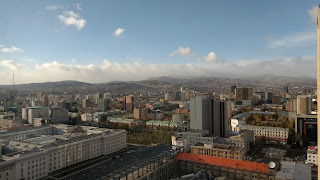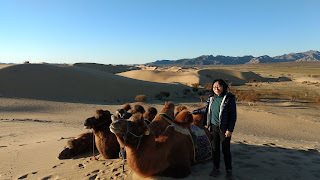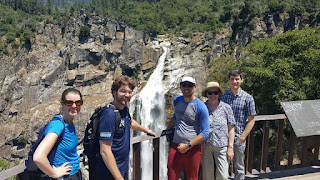This summer I ran two half marathons. First, the Davis moonlight marathon on July 9th in Davis, California. I had been training for a couple of months building up to the San Francisco half marathon at the end of July, but I always look for races around places where I'll be staying, so when I saw this was about 3 miles from the NEH seminar I attended this summer I went for it. I usually like to get in a "practice" race before the real one to estimate what time I might expect. Considering this was a couple of weeks prior to the San Francisco race, but San Francisco was supposed to be hillier, I thought that I ought to add about 5 minutes to whatever time I ran here and I was estimating I would finish around 1hr 50 minutes.

What I did not consider was the heat. Davis is away from the coast and although it looks close to San Francisco on a map it does not share it's weather patterns. On the day of the race it was 105F at peak of the day and about 100 when I started running at 7pm. Add on top of that that I thought the race was the next day, had gone out drinking with buddies the night before, only to realize at 3pm on race day that the start was in 4 hours... So, I considered not running it, but I had been hydrating all day and felt ok. I biked to the race (I know, biking to a race then biking home? madness) and by the time I got there around 630pm there were a lot of people milling around. To make a long story short, the race started just about on time and the course was a pretty nice loopy bit of bike trail going through quiet neighborhoods and parks. As the race went on I realized that the heat was slowing me down. In the first hour I must have stopped for water/to walk at least 5 times. It was at about 8pm that the sun really started to leave the sky and the temperatures dropped. I think by the time I finished, just a few minutes after 9pm, that the temperature was 75F, a big difference from the start. It was noticeable on my timing as well. The second half of the race I ran faster than the first with about 1hr for the second half and 1hr 5 min for the first. So, I didn't hit my time of 1 hr 50 minutes for the whole race, but I completed it and was pretty proud of that. Then I got on my bike and pedaled the 3 miles back to campus.
Two weeks later I was in San Francisco for the 1/2 marathon there. By this point in the year I was very well prepared to run this race, having trained hills and distances beyond the 21 km required. When I arrived in SF it was late afternoon so my plan was just to chill and eat a mild dinner, but then I remembered that I hadn't even picked up my race pack yet! Ok, so I checked out an Uber to the pick up place, about 3 miles away. Unfortunately Uber doesn't work for me in the US (with a Chinese CC) so I ended up walking to the expo center and then walking back, a 6 mile loop. I then had a spaghetti dinner and hit the hay around 9pm. It took a long while to get to sleep though since my window went to a shared courtyard where some women where (literally) yelling at each other in conversation. I finally got to sleep around what must have been 1030. I had set my alarm for 445am since the start time was 530am and I wanted to eat a bit before leaving. In the darkness of the morning a door slammed and woke me up. Being race day, I thought, I better check my phone to see if I should get up. Good thing I did! I don't know how, but both of my alarms failed to go off so now it was 5:07am, 23 minutes to race start and I was a mile away from the start line and just waking up. I jumped out of bed to get my clothes on and decided there wasn't time to eat, but I had a couple of gels for the race so I sucked down one of those as I half jogged/power walked to the start line. I shouldn't have gone so fast because when I got there I stood around for another 30 minutes waiting for waves to start. I didn't actually cross the start line until around 6am.


The race was marvelous. Early morning in the bay area was very beautiful and slightly cool, but I was sweating and there was fog pretty early on. I felt really good going onto the Bay Bridge and pretty much the whole race I was passing people. I actually put myself a wave back further than I thought I could do with the idea that it would be encouraging to pass people and it was. The bridge was shrouded in fog and really I couldn't see more than 100m in front of me let alone get a view of the ocean or bay.
By the time we came off the bridge I was thinking that I might hit my goal of 1hr 55min. That is a bit slower than my normal 1/2 time, but SF is a hilly race. The next 1/3 of the race was mostly up and down hills and then finally on to the finish. Overall it was a great event. I then boarded the bus back to SF which was sunny and clear. An hour later, after walking to my hotel, showering and packing up, I was on the road to fly out of San Jose and to Wisconsin.
Yes, it was as hard as it looks, but I loved it!




















































